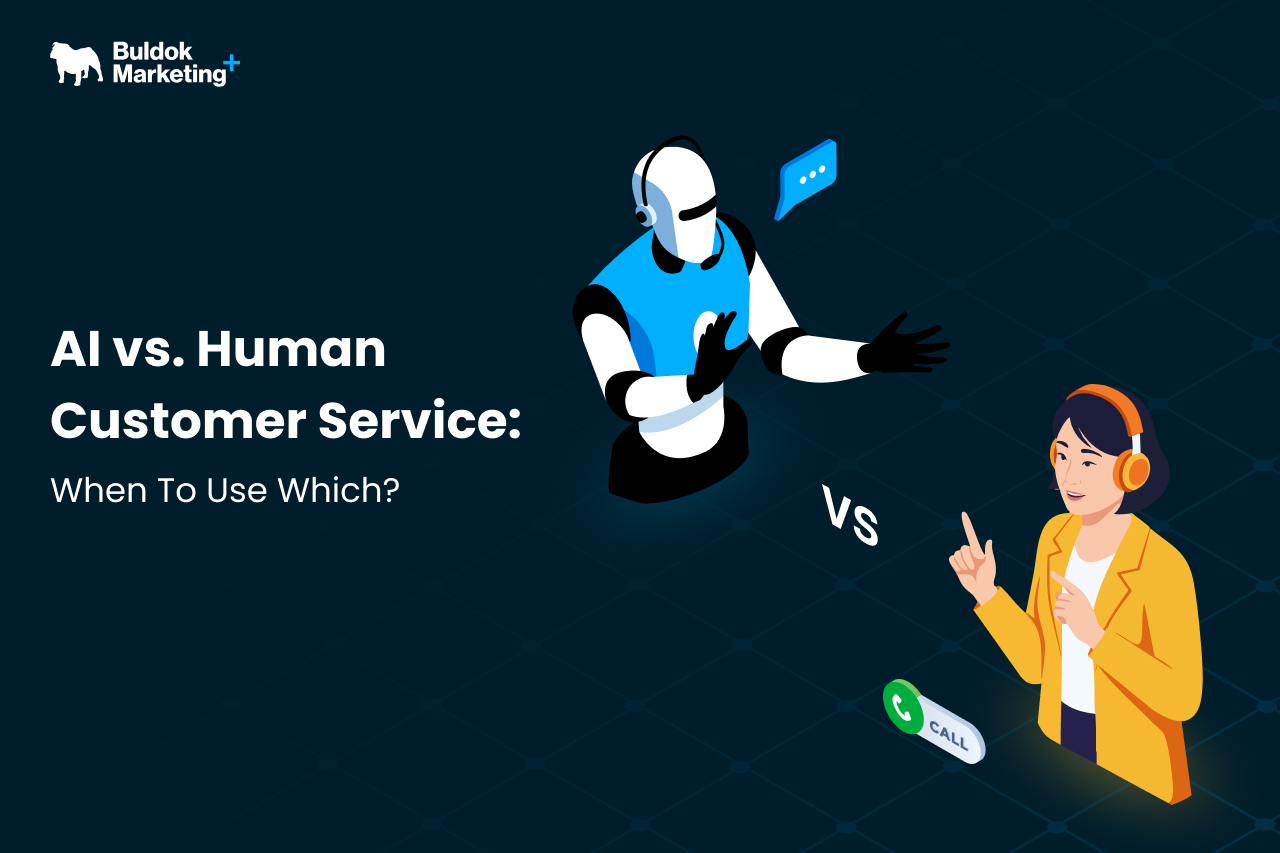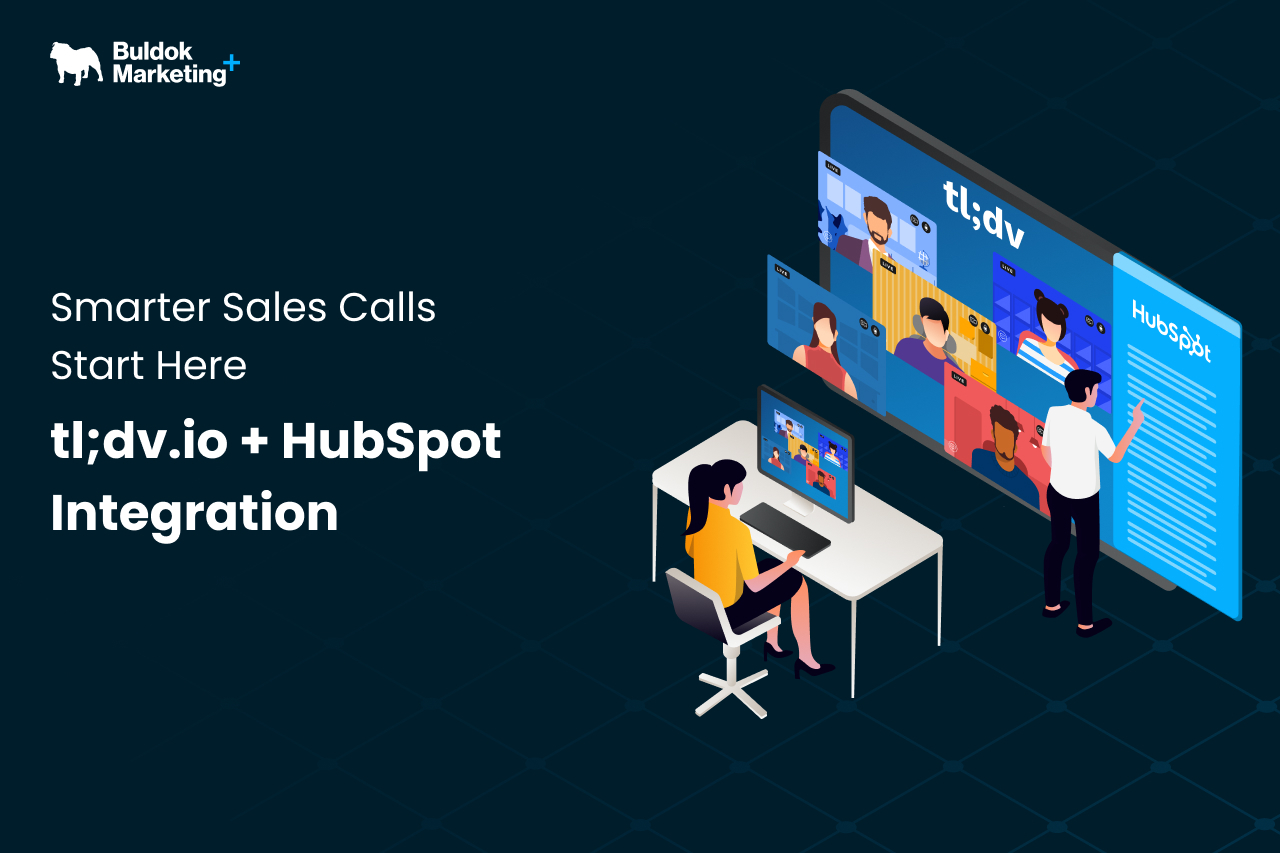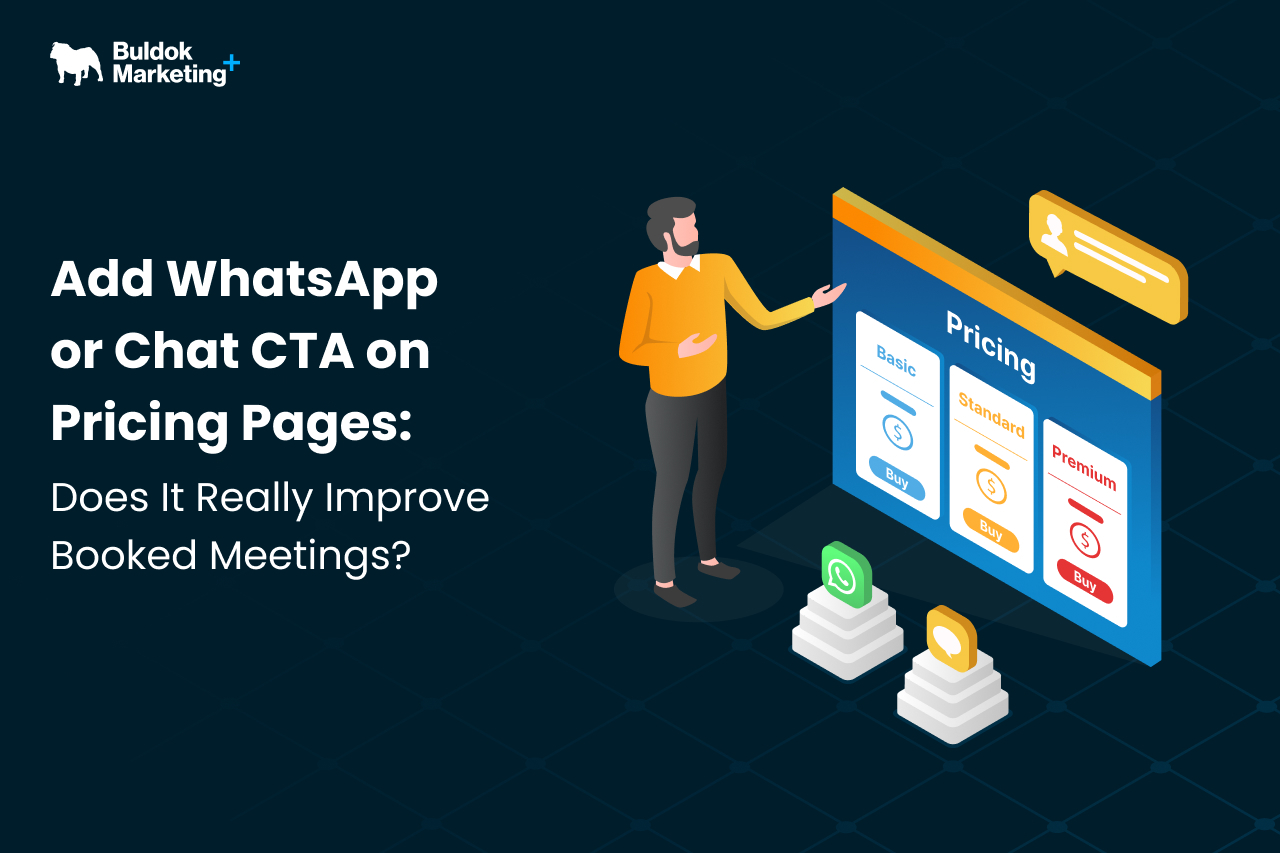B2B marketing has entered a new phase where success depends on how deeply you understand the accounts that matter the most for your business.
To stay competitive with this change, many teams are turning to account-based marketing (ABM) to focus effort, budget, and strategy on the accounts that matter most.
According to the Demandbase 2024 ABM Benchmark Report, “90% of organizations have an ABM strategy in place and 81% of marketers say it delivers a higher return on investment than other marketing initiatives.” What’s fueling this success is a decisive shift in how B2B teams use AI and hyper-personalization to connect with modern buying groups that are larger, more digital, and increasingly AI-assisted.
In this blog, we’ll unpack how top B2B teams are leveraging AI + personalization to drive measurable results in ABM, and what practical lessons you can apply to your own demand-generation strategy.
The Rise of ABM as a Revenue Engine
For years, marketers have been asked to “do more with less”; deliver higher-quality leads, faster pipelines, and stronger ROI, all on flat budgets.
Now, ABM has become the go-to solution for marketers because it focuses effort where it matters most: the high-value accounts most likely to convert and expand.
As per Demandbase’s 2025 State of ABM report, “87% of marketers surveyed plan to increase ABM budget. Additionally, 77% of respondents stated they expect to increase the number of ABM staff.” This growth mindset is a clear signal that companies are treating ABM as the central GTM motion that powers sustainable growth.
The Role of AI in Modern ABM
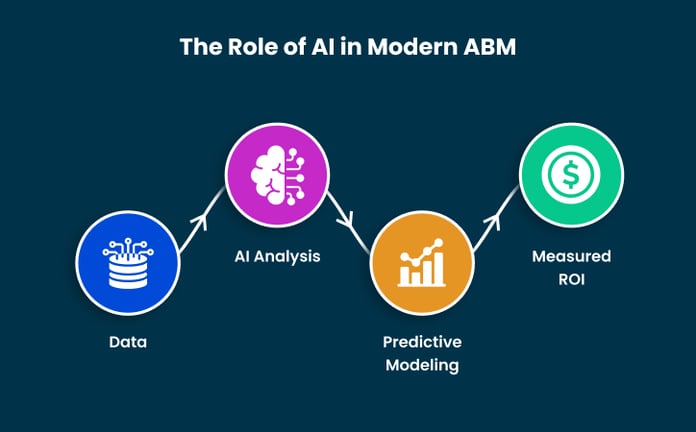
AI has quickly become the defining accelerator of ABM maturity. According to the 2025 State of ABM Report, nearly 40% of marketers have already implemented generative AI on a limited scale in their ABM programs, while another 33% are actively exploring use cases.
The report shows that B2B teams are using AI to:
- Generate deeper account insights (50%)
- Engage clients effectively and improve the customer experience (48%)
- Develop new creative ideas and campaign strategies (44%)
- To develop new ideas for marketing activities (44%)
- Optimize spend and improve ROI (35%)
- To write marketing materials (25%)
Meanwhile, Steve Armenti, CEO and Founder of twelfth and a former Global Demand Generation Manager at Google, said that “In 2025, we’ll see the rise of predictive propensity models that identify not just which accounts will buy, but when they’ll engage and what they’ll engage with.
These intelligent models will allow marketers to move beyond static account lists to signal-based audiences, adapting in real time as buyer intent shifts.
But experts also caution that success depends on balance. Jon Russo, Founder and CMO of B2B Fusion, advises marketers to let AI handle the data analysis, personalization, and task automation, while reserving the human touch for emotional connection and trust-building.
Teams that embrace this partnership are already seeing stronger engagement, faster deal cycles, and a more predictable path to revenue.
The Role of Hyper-Personalization in Modern ABM
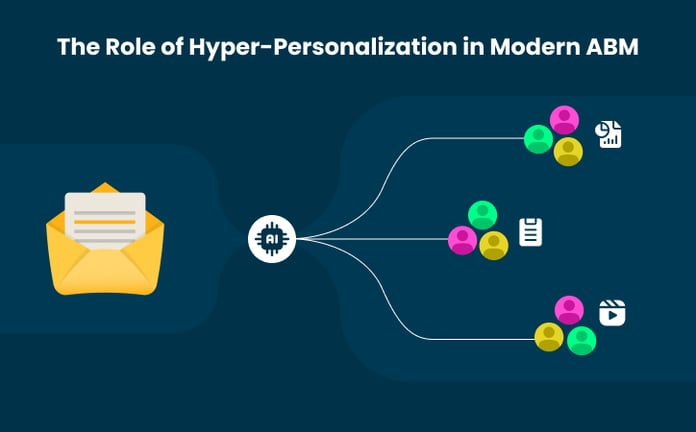
The 2025 buyers expect user experiences crafted for their exact role, pain points, and stage of the journey. This evolution is called hyper-personalization. It’s the fusion of data, AI, and creativity to craft dynamic content for each buying group’s needs.
In practice, hyper-personalization means:
- Crafting personalized messages for individual stakeholders, from finance and IT to procurement and end-users, instead of targeting just the company.
- Using AI to match content formats (videos, ROI calculators, quizzes, or case studies) to buyer intent and engagement level.
- Delivering customer experiences that update automatically with evolving users’ behavior to ensure that every touchpoint feels timely and not repetitive.
When every piece of content feels uniquely crafted, it strengthens relationships and keeps your brand top-of-mind throughout a longer, more complex buying journey.
5 Steps to Implement AI + Personalization in Your ABM Program
Understanding how AI & personalization are reshaping ABM is one thing; implementing them effectively is another. Here’s a step-by-step roadmap you can follow to evolve from traditional campaigns to intelligent account experiences:
1. Auditing Current ABM Setup
Before bringing in AI or automation, check your foundation ABM setup by asking questions such as: Do you have a clearly defined Ideal Customer Profile (ICP)? Are your target accounts segmented by intent, industry, or engagement level?
Then audit your tech stack, data sources, and team alignment to ensure that all teams are working on the same account lists to drive measurable results. Without this baseline, personalization efforts risk missing the mark.
2. Integrating AI
Next, use AI to uncover hidden buying signals and prioritize accounts dynamically. This report also highlights that the most effective use of AI is in analyzing engagement patterns to identify which accounts are most likely to convert and when. It’s possible by using AI-powered intent tools and CRM integrations to surface these insights automatically and route them to your sales team in real time.
3. Creating Hyper-Personalized Content
Use AI and data analytics to map out content journeys across the entire buying group. Consider building and integrating interactive formats like calculators, personalized videos, or virtual demos because immersive content boosts engagement and keeps buyers active across longer sales cycles.
4. Focus on Multichannel Experiences
Hyper-personalization isn’t limited to email or LinkedIn. Experiment with Connected TV (CTV), paid social, and intent-driven retargeting. With 73% of B2B marketers now using CTV, it’s a powerful new channel for delivering relevant ads to key decision-makers and measuring the impact through view-through conversions and CRM data.
5. Track Metrics & Keep Optimizing Them With Time
Finally, success depends on what you measure. Establish cross-functional review meetings to assess campaign insights, share learnings, and continuously refine your strategy.
Move beyond vanity metrics like impressions or open rates. Instead, track account engagement, pipeline velocity, deal size, and win rate to evaluate actual ABM performance.
Overall ABM Lessons Worth Implementing
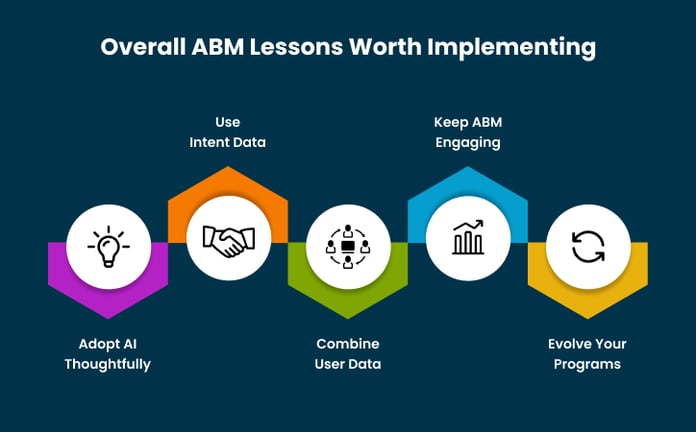
The Demand Gen Report concludes with a powerful message: as more organizations embrace AI and personalization, the gap between ABM leaders and laggards is widening fast. The winners are those who treat ABM as a strategic discipline that blends technology, creativity, and collaboration.
Here are the key lessons drawn from the report’s findings and expert insights:
- Adopt AI Early, but thoughtfully and after a proper implementation strategy
- Use intent data and AI-assisted research to understand what each cares about, and deliver targeted content that fuels collective confidence.
- Combine user data from different sources into one platform and use it to deliver personalized content based on user behavior.
- Treat ABM as an ongoing conversation by using AI tools and adaptive content to keep your brand engaged with every stakeholder throughout the buying journey.
- Keep your teams aligned, optimize your tactics regularly, and evolve your programs based on real account feedback and performance insights.
Challenges & Pitfalls to Avoid
While AI and hyper-personalization are transforming ABM, the 2025 State of ABM Report also warns that technology alone isn’t a silver bullet. Here are some of the common risks you should avoid:
- Relying on poor quality or fragmented data
- Over-automation without human touch
- Your teams are working in silos
- Measuring the wrong metrics
- Neglecting continuous optimization of your ABM strategies
In short, AI + personalization amplifies your strengths, but also introduces specific gaps. The key to sustainable success is combining artificial intelligence with human thoughts to craft experiences that feel both smart and personal.
The Future of ABM Belongs to the AI-Ready and Human-Smart Teams
Gabe Rogol, CEO of Demandbase, explains, today’s buyers don’t act as individuals; they operate as interconnected, AI-augmented groups that research, evaluate, and decide collectively.
Today, B2B success depends on how effectively marketers can connect insights across that group, not just reach one stakeholder.
To stay ahead, advanced B2B teams are:
- Investing in AI-driven account insights to detect buying signals across multiple personas.
- Building dynamic content engines that adapt automatically based on behavior and engagement data.
- Using predictive analytics to anticipate buyer needs and deliver value before they ask for it.
- Prioritizing account-based experiences (ABX) over isolated campaigns
The marketers who master these strategies will be the ones turning personalized engagement into long-term growth.
In short, the message from this year’s report is clear: the future of ABM belongs to those who personalize with purpose and align with precision.
At Buldok Marketing, we help brands bridge that gap by combining AI-enabled strategy and automation to build ABM programs that are relevant to modern buying groups and will bring revenue.
Want to modernize your ABM strategy with AI-powered personalization? Let’s connect and discuss your requirements today!

.jpg)
